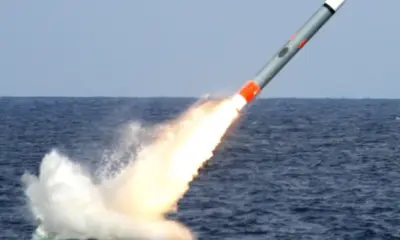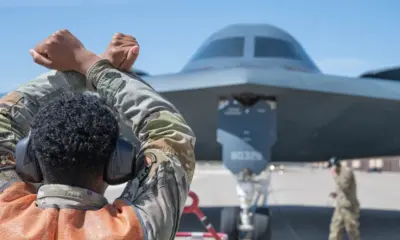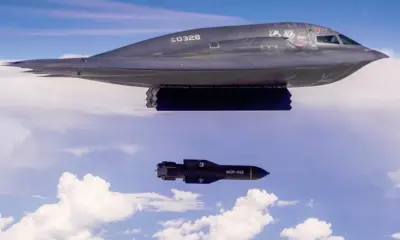Global
U.S. Conducts Airstrikes on Iranian Nuclear Sites, Marking Direct Military Intervention
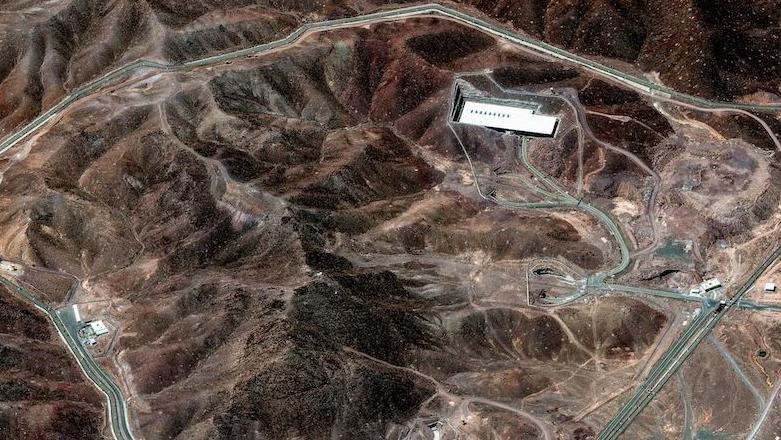
On June 21, 2025, the United States launched a series of airstrikes targeting key Iranian nuclear facilities, officially entering the conflict alongside Israel in efforts to cripple Iran’s nuclear program. President Donald Trump announced the operation as “very successful,” confirming strikes on three major sites: Fordo, Natanz, and Isfahan.
The Fordo facility, located deep within a mountain near Qom and known for its heavy fortifications, was the primary target. Trump highlighted that a “full payload of bombs” was dropped on Fordo, underscoring the scale and precision of the attack. The Natanz uranium enrichment plant and a facility near Isfahan, believed to house highly enriched uranium, were also hit.
This marks the most direct U.S. military action inside Iran in decades, a significant escalation following weeks of Israeli airstrikes against Iranian nuclear and military sites. The strikes aim to delay or dismantle Iran’s nuclear weapons capability, a goal shared by both Washington and Jerusalem.
Iranian officials acknowledged the attacks, with some senior commanders reportedly killed in the operation. The Iranian leadership is now reportedly focused on heightened security measures amid fears of further strikes and potential assassination attempts on top figures, including Supreme Leader Ayatollah Ali Khamenei.
The U.S. strikes have raised concerns about a broader regional escalation. Iran has threatened retaliatory attacks on American interests, and Israel has increased its alert status, limiting public activity as a precaution. International observers, including the International Atomic Energy Agency, have warned about the risks of attacking nuclear facilities, particularly the commercial nuclear power plant in Bushehr, which was not targeted.
President Trump, in his statement, emphasized that all U.S. aircraft safely exited Iranian airspace and called for peace following the operation. However, the move signals a dramatic shift in U.S. policy, moving from diplomatic pressure to direct military engagement.
The full consequences of the strikes remain to be seen, but the operation has undeniably intensified the conflict between Iran, Israel, and the United States, with global implications for security and energy markets.
Key Facts:
-
U.S. airstrikes targeted Fordo, Natanz, and Isfahan nuclear sites in Iran.
-
The Fordo site was hit with a full payload of bombs, designed to penetrate deep underground facilities.
-
The strikes represent the first direct U.S. military action inside Iran in decades.
-
Iranian commanders were reportedly killed, and the leadership is on high alert.
-
Israel raised its security alert and restricted public activities following the strikes.
-
International agencies warn of risks associated with attacks on nuclear facilities.
This development marks a critical escalation in the Middle East conflict, with the potential to reshape regional dynamics and international relations.
Global
Fire in the Skies: Air India Flight 171 Crash Sparks Outrage and Mystery in Ahmedabad

A devastating nightmare unfolded near Ahmedabad on June 12, 2025, when Air India Flight 171, a Boeing 787 Dreamliner, plummeted from the skies moments after takeoff in a fiery crash that shook the nation to its core. The horror was almost unimaginable—both engines mysteriously shut down due to the fuel cutoff switches being flipped, turning the aircraft into a death trap with 260 souls caught in the inferno, including terrified passengers, crew, and innocent people on the ground. Only one miraculous survivor, a British passenger named Vishwash Kumar Ramesh, escaped the cataclysm by a hair’s breadth.
Cockpit voice recorders revealed a frantic, chilling exchange between the pilots in those final moments: confusion reigned as one demanded to know why the fuel had been cut off. The mystery deepens as investigators grapple with whether human error or a bizarre technical glitch triggered the fatal switch, despite the plane being fully serviced and cleared for flight.
The carnage intensified as the doomed aircraft crashed into the BJ Medical College and Hospital hostel, turning a tragic aviation disaster into a citywide catastrophe, stealing the life of a former Gujarat Chief Minister among the victims and sparking outrage and grief across India.
This catastrophic crash has sent shockwaves through the global aviation community, sparking fierce debates over pilot training, cockpit protocols, and aircraft safety measures. Air India faces intense scrutiny as families demand answers for the devastating loss, and investigators race against time to piece together how a routine flight turned into one of the deadliest crashes in recent memory. The haunting question remains: how did a perfect storm of error and fate bring down this dreamliner in flames?
Global
Iran Moves to Close Strait of Hormuz Following U.S. Airstrikes, Raising Global Energy Alarm
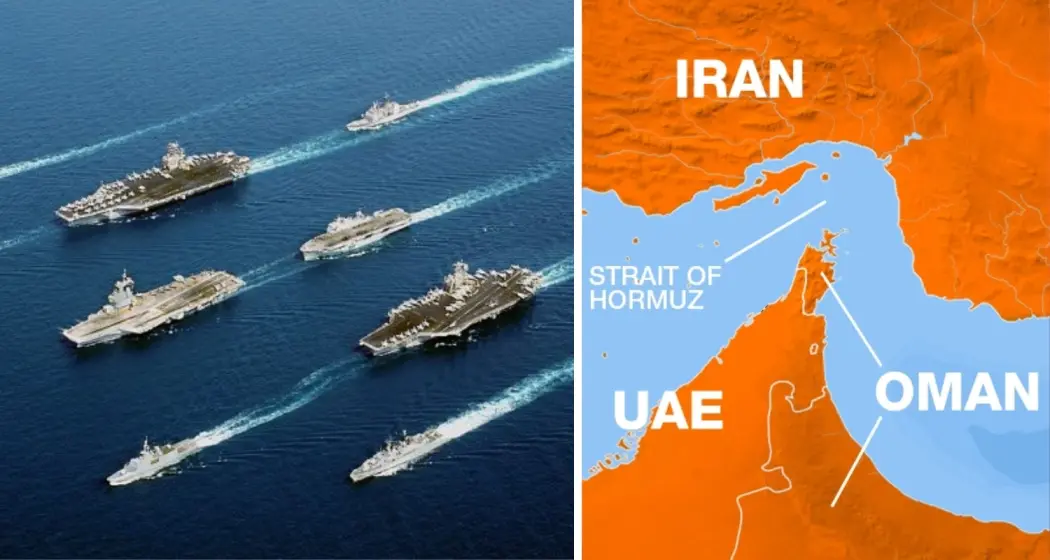
In a dramatic escalation of tensions in the Middle East, Iran’s parliament has approved a measure to close the Strait of Hormuz, the vital maritime chokepoint through which nearly 20% of the world’s oil and gas shipments pass daily. The decision comes in direct response to recent U.S. airstrikes on Iranian nuclear facilities, marking a significant intensification of the conflict.
The final authority to implement the closure rests with Iran’s Supreme National Security Council, which is expected to make a decisive announcement soon. Iranian lawmakers and Revolutionary Guard commanders have indicated that the closure will be executed “whenever deemed necessary,” signaling Tehran’s readiness to disrupt global energy flows if pressured further.
The Strait of Hormuz, located between Oman and Iran, is only 21 miles wide at its narrowest point, with a shipping channel just 2 miles wide. It connects the Persian Gulf to the Gulf of Oman and the Arabian Sea, serving as a critical artery for the export of crude oil from major producers including Saudi Arabia, Iraq, the UAE, Kuwait, and Iran itself.
U.S. Secretary of State Marco Rubio urged China on Sunday to dissuade Iran from closing the strait, emphasizing that such a move would be “economic self-destruction” for Tehran and have far-reaching consequences for global markets. Rubio warned that closing the strait would represent a serious escalation, prompting a strong response from the United States and its allies.
The potential closure has sent shockwaves through global energy markets, with experts warning of sharp increases in oil prices and disruptions to supply chains. India, a major crude importer that relies on the strait for about 2 million barrels per day, is closely monitoring the situation and preparing contingency plans. While India has diversified its energy sources, a closure could still lead to short-term price spikes and inflationary pressures.
Iran’s move to block the Strait of Hormuz is a high-stakes gamble that could escalate the Middle East conflict into a broader crisis, affecting economies worldwide. The international community remains watchful as the Supreme National Security Council weighs its options amid mounting pressure.
Global
How 30 Tomahawk Missiles and Bunker-Buster Bombs Obliterated Iran’s Nuclear Sites in Historic U.S. Strike
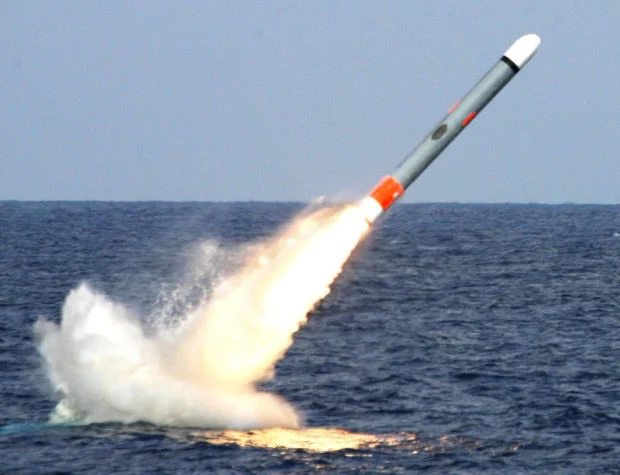
In a dramatic escalation of the Middle East conflict, the United States launched a meticulously planned and highly coordinated airstrike on June 21, 2025, targeting three of Iran’s most sensitive nuclear facilities: Fordow, Natanz, and Isfahan. This operation marked the first direct U.S. military strike inside Iran in decades and involved the combined use of six B-2 stealth bombers dropping Massive Ordnance Penetrator (MOP) bunker-buster bombs and 30 Tomahawk cruise missiles fired from submarines positioned 400 miles off the Iranian coast.
What Happened?
President Donald Trump announced the strikes as a “spectacular military success” and claimed that Iran’s key nuclear enrichment sites had been “completely and totally obliterated.” The Fordow site, deeply embedded inside a mountain and heavily fortified, was the primary target of the B-2 bombers, which dropped six 30,000-pound bunker-buster bombs designed to penetrate and destroy underground facilities. Meanwhile, 30 Tomahawk missiles — long-range, subsonic cruise missiles known for their precision — were launched from U.S. Navy submarines to strike the Natanz and Isfahan sites.
Trump emphasized the unprecedented nature of the operation, stating on Truth Social, “A full payload of BOMBS was dropped on the primary site, Fordow. Fordow is gone.” He also reassured that all U.S. aircraft had safely exited Iranian airspace following the mission, underscoring the operation’s success and the skill of American forces.
Understanding the Tomahawk Missile
The Tomahawk Land Attack Missile (TLAM) is a cornerstone of U.S. precision strike capability. Measuring 18.3 feet in length and weighing approximately 3,200 pounds (4,400 pounds with booster), each missile carries a 1,000-pound conventional warhead. Guided by GPS, inertial navigation, and terrain contour matching, Tomahawks can strike targets with an accuracy within 10 meters from distances up to 1,500 miles. Their stealthy, low-flying approach makes them difficult to detect and intercept, allowing them to penetrate sophisticated air defenses.
First used in combat during the 1991 Gulf War, Tomahawks have become a preferred weapon for surgical strikes against high-value, heavily defended targets. Their use in this operation allowed the U.S. to hit multiple sites simultaneously without risking manned aircraft in heavily contested airspace.
Why These Targets?
-
Fordow: Located near Qom, Fordow is Iran’s most secure uranium enrichment facility, built deep inside a mountain to withstand attacks. Destroying it was crucial to delaying Iran’s ability to produce weapons-grade uranium.
-
Natanz: Iran’s primary uranium enrichment plant, Natanz has been the focus of previous Israeli strikes and sabotage efforts. It remains central to Iran’s nuclear program.
-
Isfahan: This site houses uranium conversion and research facilities, including production of near-bomb-grade uranium, making it a key node in Iran’s nuclear infrastructure.
Strategic and Political Implications
The strikes represent a historic shift in U.S. policy, moving from indirect support of Israel’s campaign to direct military action against Iran. President Trump’s decision came after weeks of deliberation and amid escalating Israeli airstrikes on Iranian targets. The operation sends a clear message of U.S. resolve to prevent Iran from developing nuclear weapons.
While Iran confirmed that some sites, including Fordow, were attacked, it denied any serious damage or radiation risks. Iranian officials have vowed retaliation, raising fears of a wider regional conflict. The International Atomic Energy Agency (IAEA) has warned about the dangers of attacks on nuclear facilities, particularly the risk of radioactive contamination, though experts have stated that the recent strikes are unlikely to cause a Chernobyl-like disaster.
What Comes Next?
The strikes are likely to provoke Iranian retaliation, potentially through missile attacks on Israeli cities and U.S. military bases in the region, proxy militia actions, cyberattacks, and disruptions to global energy supplies. The U.S. and its allies remain on high alert, anticipating a complex and prolonged conflict.
President Trump has framed the operation as a last warning, stating that if peace does not come quickly, the U.S. will strike additional targets with “precision, speed and skill.” The world watches anxiously as the Middle East stands on the edge of a potentially wider war.
-

 Explainers2 months ago
Explainers2 months agoWhat Blunder Led to American Airlines Flight Diverting to Rome?
-

 Trending Now2 months ago
Trending Now2 months agoBillie Elish and her boy friend Nat Wolf Balcony Kiss – pictures go viral
-

 Global2 months ago
Global2 months agoColombian Presidential Candidate Miguel Uribe Turbay Shot at Rally in Bogotá
-

 Explainers2 months ago
Explainers2 months agoWhy the U.S. Needs Rare Earth Metals from China
-

 Explainers2 months ago
Explainers2 months agoWhat Went Wrong? Major Egg Recall Sparks Nationwide Salmonella Outbreak
-
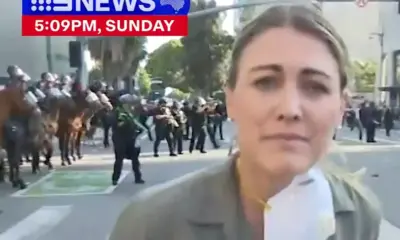
 Trending Now2 months ago
Trending Now2 months agoReporter Shot by Rubber Bullet on Live TV During Immigration Protests in L.A.
-

 Money & Tools2 months ago
Money & Tools2 months agoLVMH: A Golden Opportunity Amidst Market Corrections
-

 Global2 months ago
Global2 months agoTrump Finalizes China Trade Deal, Tariffs Soar to 55%



